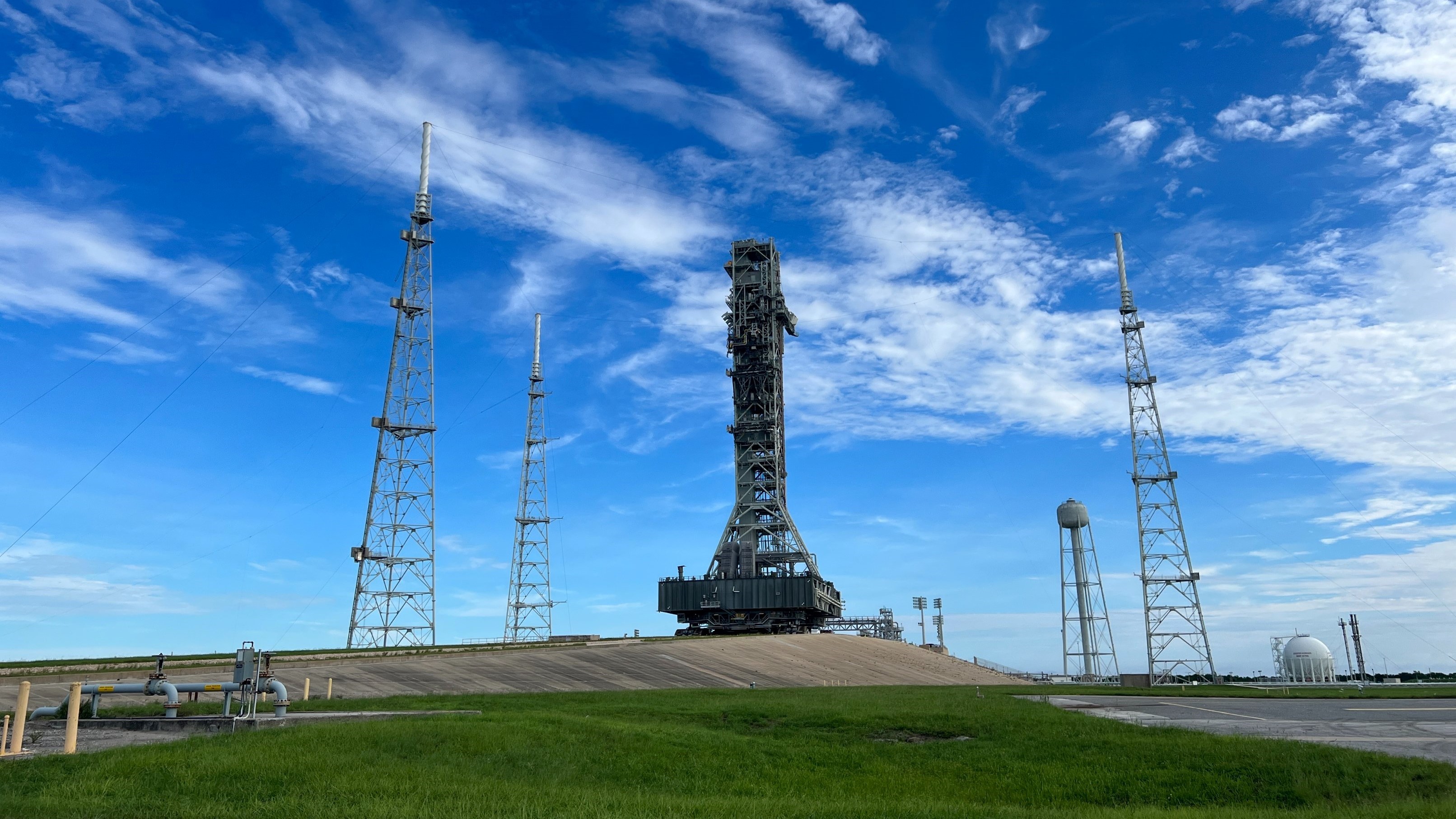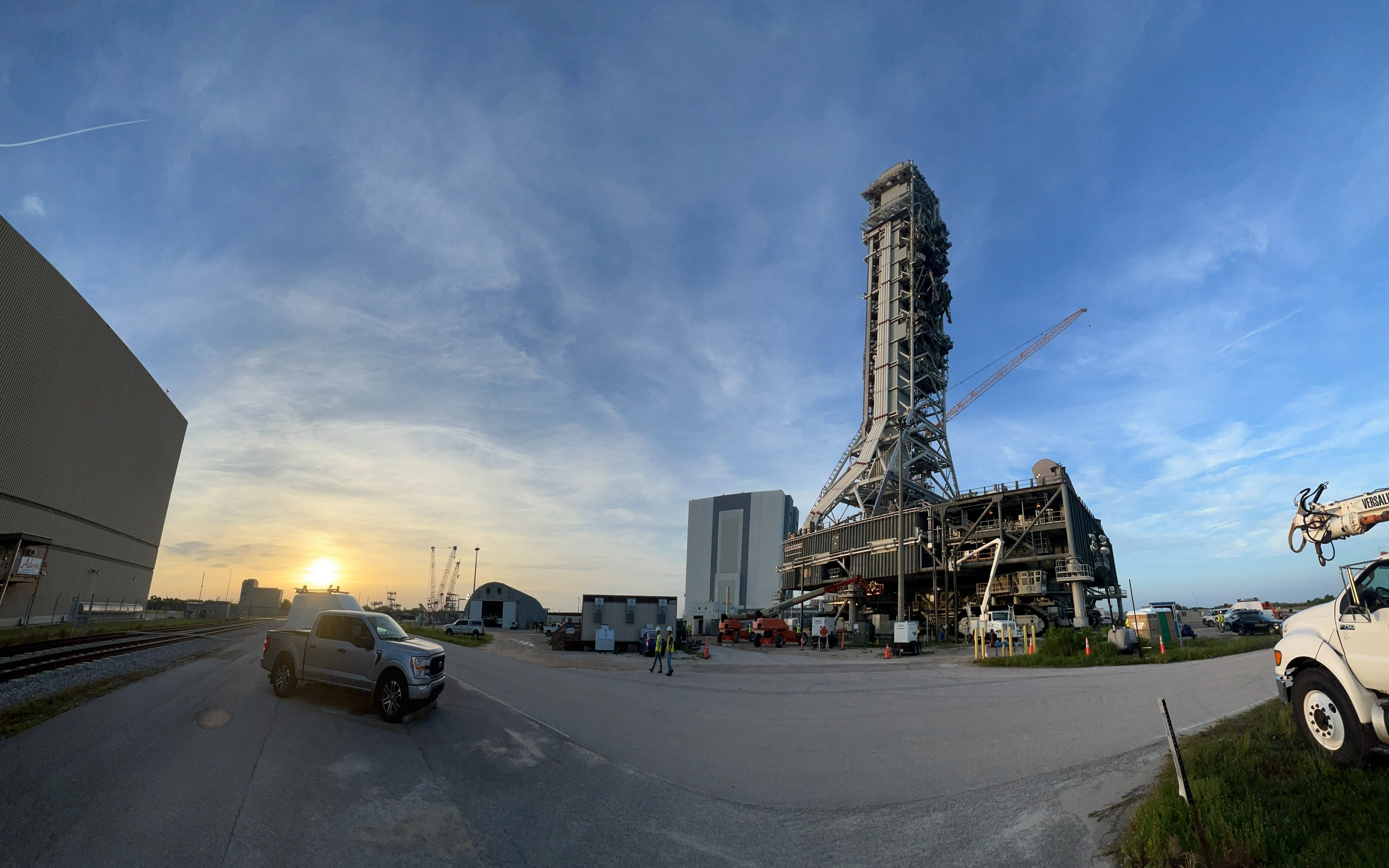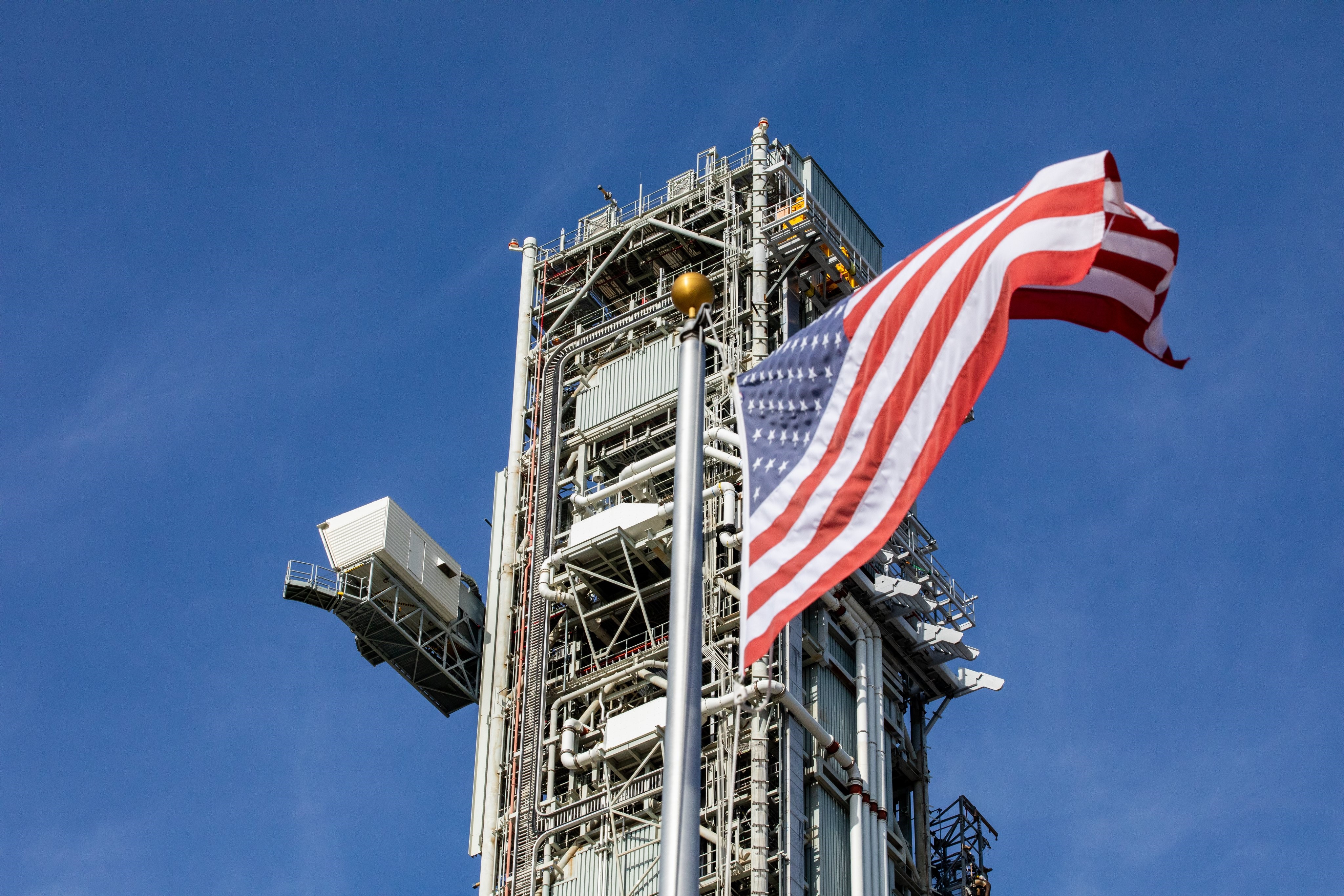NASA rolls Artemis 2 mobile launch tower to pad for tests (photos)
Slow and steady wins the race, and Artemis 2 is creeping up around the corner.

The mobile launch platform (MLP) responsible for transporting and supporting NASA's Artemis moon rockets was just rolled to the pad for testing.
The 380-foot-tall (115 meters) tower connects to NASA's Space Launch System megarocket (SLS), which is set to launch a crew of four astronauts around the moon on its next mission, Artemis 2, near the end of 2024.
Artemis 1 launched from the same MLP on an uncrewed lunar mission in November, 2022. When it did, the force of SLS's first-stage engines and solid rocket boosters left the tower in need of a few repairs; for example, the launch blew the structure's elevator doors off. With those repairs now complete, the MLP has been rolled out to Launch Complex 39B (LC-39B) at NASA's Kennedy Space Center (KSC) in Florida for testing.
Related: NASA's Artemis program: Everything you need to know
Nice Views: Take a look as teams at @NASAKennedy prepare to move the 380-foot-tall mobile launcher 1 atop crawler transporter 2 out to Launch Pad 39B to connect it to the pad for testing. Teams have completed the jacking and leveling process and Artemis launch director Charlie… pic.twitter.com/YrOnxMhcpuAugust 16, 2023
The MLP was kept at a designated parking spot outside KSC's Vehicle Assembly Building (VAB), where NASA's giant crawler-transporter 2 vehicle hoisted and leveled the tower for travel.
First motion toward LC-39B occurred at 8:27 a.m. EDT (1227 GMT) on Wednesday (Aug. 16), according to a NASA press release. One of NASA's accounts on X, formerly known as Twitter, posted photos of ground teams at KSC facilitating the transfer.

The 4-mile (6.4 kilometers) journey from the MLP's park site to LC-39B was completed over the course of two days, with ground teams pausing overnight.
Get the Space.com Newsletter
Breaking space news, the latest updates on rocket launches, skywatching events and more!
On Thursday morning (Aug. 17), agency social media accounts confirmed the tower's arrival at the launch pad, wrapping up its journey at approximately 10 a.m. EDT (1400 GMT).
After a full day of crawling closer to Launch Pad 39B at @NASAKennedy, our teams have stopped just short of the launch pad's gates.Stay tuned for more coverage on the mobile launcher 1's roll to the pad and follow us for updates on all things build, launch, and recover… pic.twitter.com/7Ac22P3nY5August 16, 2023

Now secured at the pad, NASA's Exploration Ground Systems teams will spend the next several months outfitting, upgrading and testing the MLP. This work will include the addition of a 1.4-million-gallon (5.3 million liters) liquid hydrogen tank to the pad's infrastructure. The tower's egress system, which astronauts and ground teams would use to escape the launch pad during an emergency, will also be refurbished and tested, according to NASA's release.
Following a successful checkout of the MLP's systems at LC-39B, the launch tower will be transported to the VAB, where it will eventually support assembly and stacking operations for the Artemis 2 SLS rocket. If NASA's schedule holds, Artemis 2 will launch a crew of four astronauts on a journey around the moon for the first time in over 50 years. The mission is currently scheduled for late 2024.
Join our Space Forums to keep talking space on the latest missions, night sky and more! And if you have a news tip, correction or comment, let us know at: community@space.com.

Josh Dinner is the Staff Writer for Spaceflight at Space.com. He is a writer and photographer with a passion for science and space exploration, and has been working the space beat since 2016. Josh has covered the evolution of NASA's commercial spaceflight partnerships and crewed missions from the Space Coast, as well as NASA science missions and more. He also enjoys building 1:144-scale model rockets and human-flown spacecraft. Find some of Josh's launch photography on Instagram and his website, and follow him on X, where he mostly posts in haiku.









